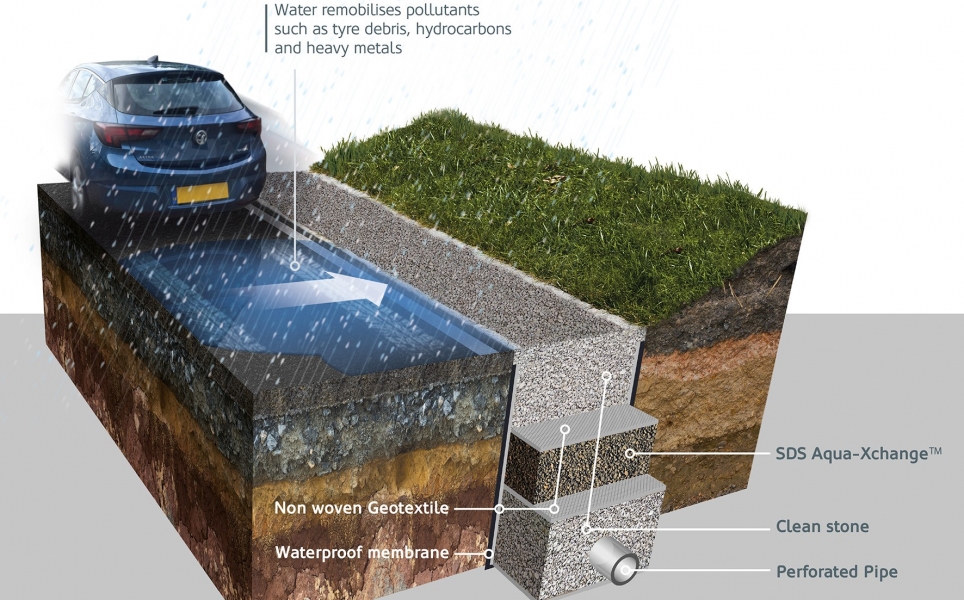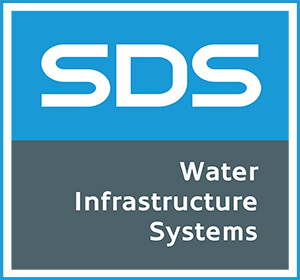SDS has developed a groundbreaking new sustainable drainage material that offers a simple and versatile solution to removing toxic heavy metals pollution from highways. SDS Aqua-Xchange™ is a flexible and highly-efficient granular material that captures copper and zinc in surface water runoff from motorways, trunk roads and other high-traffic areas.
SDS Aqua-Xchange™ can be used in regulatory-compliant Sustainable Drainage Systems (SuDS). It has been proven in independent testing to achieve 99% removal of dissolved copper and zinc, toxic metals identified by Highways England as ‘priority pollutants’ and subject to strict regulatory controls.
Delivered to site in lightweight, one cubic metre bags, SDS Aqua-Xchange™ is now available for consulting engineers and infrastructure contractors to deploy as stormwater treatment in highways drainage, as well as on other higher risk locations such as retail car parks, freight and logistics hubs.
SDS worked with scientists at the University of Chester to perfect SDS Aqua-Xchange™. A unique combination of naturally-occurring materials, it uses the processes of adsorption and ionic exchange to form unbreakable bonds with the heavy metals, including copper and zinc, capturing and retaining them even in heavy storms.
In a typical application, a layer of SDS Aqua-Xchange™ can be added as an additional component to a linear filter drain. Installed at a shallow depth, contractors avoid costly excavation or use of heavy cranes.

SDS Aqua-Xchange™ can also be combined effectively with other proprietary SuDS devices. As it can filter out finer silts and sediments, it can be deployed downstream of a hydrodynamic vortex separator such as SDS Aqua-Swirl™ that targets larger particles. It can also be combined with geocellular storage, such as SDS GEOlight®, when additional attenuation is needed as part of the roadside treatment system.
Compliant with guidelines in CIRIA C753 The SuDS Manual, SDS Aqua-Xchange™ can be included as a component in vegetative SuDS devices such as dry swales, rain gardens or bio-remediation zones, so that robust retention of copper and zinc is completely assured while plants can continue to thrive as part of the landscaped design.





